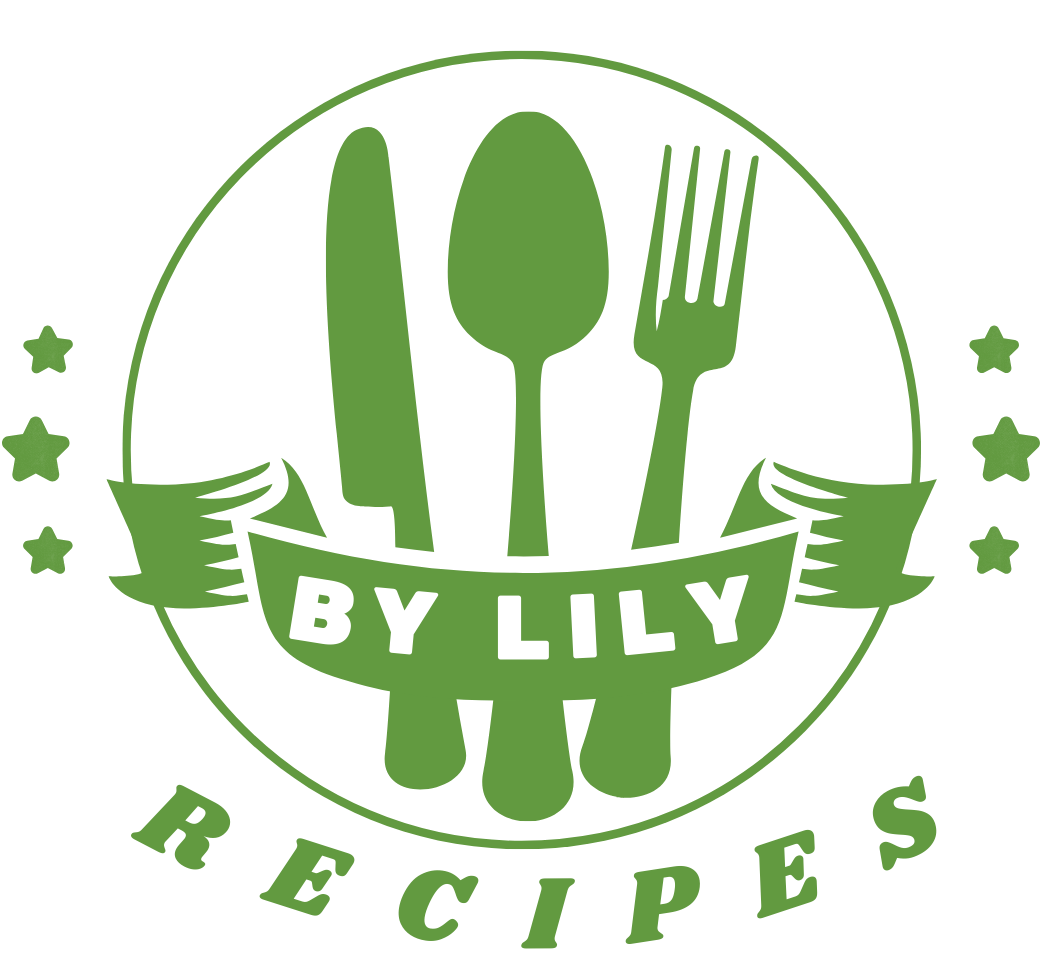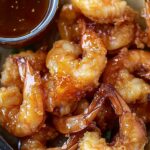Soda Farls are a traditional Northern Irish quick bread made without yeast. Instead, they rely on baking soda and buttermilk for a light, fluffy texture. The dough is shaped into a round, cut into four pieces (farls), and cooked on a stovetop rather than baked in an oven. They’re a staple of an Ulster Fry (a classic Northern Irish breakfast) and can be enjoyed with butter, jam, or even fried for a crispy, golden finish.
Full Recipe:
Ingredients
- 2 cups all-purpose flour (260g), plus extra for flouring
- 1 teaspoon baking soda
- 1 teaspoon sugar (optional)
- ½ teaspoon salt
- 1 cup buttermilk (235ml) or 1 cup milk with 1 teaspoon lemon juice or white vinegar stirred in
Directions
- Preheat the pan: Heat a skillet or frying pan on low-medium heat.
- Mix dry ingredients: In a large mixing bowl, whisk together the flour, baking soda, sugar, and salt.
- Add buttermilk: Create a well in the center of the dry ingredients, pour in the buttermilk, and stir to combine.
- Knead the dough: Lightly knead the dough a few times until it holds together but is not overworked.
- Shape and cut: Lightly flour a surface, roll or pat the dough into an 8-inch (20 cm) circle, about ½-inch thick. Cut it into four equal quarters.
- Cook: Place the farls in the preheated dry pan and cook for 5-8 minutes per side until golden brown and cooked through. Leave them in the pan for about 10 minutes off the heat to finish cooking.
- Serve: Enjoy warm with butter, jam, or as part of a full Irish breakfast.
Nutrients (per serving, approx.)
- Calories: 447 kcal
- Carbohydrates: 77g
- Protein: 10g
- Fat: 10g
- Saturated Fat: 2g
- Sodium: 1123mg
- Fiber: 2g
- Sugar: 3g
- Calcium: 39mg
- Iron: 5mg
Enjoy your homemade Soda Farls—quick, easy, and full of tradition!
The History of Soda Farls
Soda Farls have been a key part of Irish culinary traditions for centuries, dating back to the introduction of bicarbonate of soda (baking soda) in the 19th century. Before this, most breads relied on yeast for leavening, which required long rising times. However, baking soda provided a revolutionary alternative that allowed bread to be made quickly and efficiently.
In Northern Ireland, where the climate and soil conditions make wheat-growing less favorable for bread flour, soft wheat was traditionally used. This softer wheat did not work well with yeast but was ideal for soda-based breads. The development of Soda Farls was a result of necessity, as they could be made using simple ingredients that were readily available. Over time, they became a beloved breakfast staple, often served as part of the famous Ulster Fry.
The Unique Cooking Method
One of the defining characteristics of Soda Farls is their stovetop cooking method. Unlike most breads, which are baked in an oven, Soda Farls are cooked on a griddle or in a frying pan. The dough is prepared, shaped into a round, and then divided into four triangular pieces (farls). These pieces are placed directly onto a heated surface and cooked until they develop a golden-brown crust on both sides.
Cooking on a stovetop provides a distinct texture and flavor. The outside becomes slightly crisp, while the inside remains soft and fluffy. The griddle-cooked method also allows for quick preparation, making Soda Farls a go-to option for busy mornings.
Why Baking Soda and Buttermilk?
The combination of baking soda and buttermilk is essential to the texture and rise of Soda Farls. Baking soda, when mixed with an acidic ingredient like buttermilk, creates carbon dioxide, which helps the dough rise without the need for yeast.
Buttermilk also contributes to the tenderness of the bread by breaking down gluten, ensuring that the farls remain soft rather than dense. In cases where buttermilk is unavailable, milk mixed with lemon juice or vinegar serves as an effective substitute. The acidity from these ingredients mimics the role of buttermilk, ensuring the bread’s light texture and distinctive taste.
Traditional and Modern Variations
While the classic Soda Farls recipe remains unchanged, there are several variations that cater to different tastes and dietary needs. Some of the most popular include:
- Wheaten Farls: Made using whole wheat flour, these provide a heartier and more fiber-rich alternative to the traditional white flour version.
- Herbed Soda Farls: Adding fresh herbs like rosemary, thyme, or chives can elevate the flavor, making them a perfect side dish for soups and stews.
- Cheese Soda Farls: Incorporating grated cheese into the dough provides a savory twist that pairs well with butter or served alongside a hearty breakfast.
- Sweet Soda Farls: Adding sugar, cinnamon, or dried fruits like raisins creates a lightly sweet version that can be enjoyed as a snack or dessert.
These variations showcase the versatility of Soda Farls, allowing them to be adapted to different preferences while maintaining their fundamental simplicity.
The Role of Soda Farls in an Ulster Fry
Soda Farls are a key component of the famous Ulster Fry, a traditional Northern Irish breakfast that typically includes eggs, bacon, sausages, black pudding, tomatoes, and potato bread. When fried in bacon fat or butter, Soda Farls take on a crispy, golden exterior, adding a satisfying crunch to the breakfast plate.
This hearty meal is deeply ingrained in Northern Irish culture and is often enjoyed on weekends or special occasions. The combination of savory ingredients with the slightly tangy taste of Soda Farls creates a balanced and indulgent meal that continues to be a favorite among locals and visitors alike.
Serving Suggestions
Soda Farls are incredibly versatile and can be enjoyed in various ways. Some of the most popular serving methods include:
- With Butter and Jam: A simple yet delicious way to enjoy freshly made Soda Farls is by spreading them with butter and jam. The warm bread absorbs the flavors, creating a comforting snack.
- Fried in Butter: Frying the farls in a bit of butter enhances their flavor and adds a crispy texture. This method is commonly used in an Ulster Fry.
- With Cheese and Ham: Slicing Soda Farls in half and filling them with cheese and ham creates a delicious sandwich that can be served warm or cold.
- As a Side Dish: They pair exceptionally well with soups and stews, soaking up the flavors and providing a satisfying complement to heartier dishes.
- Topped with Smoked Salmon and Cream Cheese: For a more refined twist, Soda Farls can be topped with smoked salmon, cream cheese, and a sprinkle of fresh herbs, making them suitable for a brunch or light meal.
Nutritional Benefits
Soda Farls offer a good balance of carbohydrates, protein, and essential nutrients. While they are traditionally made with white flour, opting for whole wheat flour can increase fiber content and provide added health benefits. The use of buttermilk contributes to their calcium and protein levels, making them a more nutritious option than some store-bought bread alternatives.
However, it’s important to note that Soda Farls can be high in sodium due to the presence of baking soda. For a lower-sodium version, reducing the amount of salt in the recipe or using a low-sodium baking soda alternative may be beneficial.
Conclusion
Soda Farls are a beloved part of Northern Irish culinary heritage, offering a quick, easy, and delicious bread option that requires minimal ingredients and effort. Their stovetop cooking method makes them accessible to anyone, even those without an oven, while their soft yet crisp texture provides the perfect base for both sweet and savory toppings.
Whether enjoyed as part of an Ulster Fry, served with butter and jam, or customized with different flavors and fillings, Soda Farls remain a timeless classic that continues to be enjoyed by generations. Their simplicity, versatility, and rich cultural significance ensure that they will remain a staple in kitchens for years to come. If you’ve never tried making Soda Farls before, this easy-to-follow recipe is the perfect place to start!






